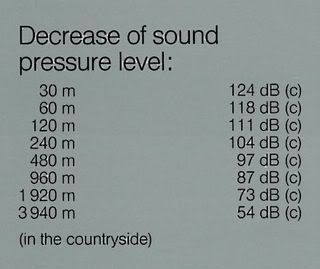I know the Video you are talking about.acoustics101 wrote:I was disappointed by the video of a unit looking similar to the HLS which indicated a mere 100 dB at a mere 20 meters from such a unit. Either the sound level meter had a bad battery, the meter was defective, or the siren's air supply was low.
It was a real HLS, even one of the most powerfull.
The Name of the manufacturer is Rickmers-Werft, the rarest HLS in Germany.
At first, if you emit Sound with >160 dB, you don't have to care about dead zones because even the reflection of the sound is louder than any other normal siren. It's very usefull to concentrate the sound to a very small "donut" because the direct radiation is only needed at very big distances - because of that, the SPL-meter will have been hit only by reflections.
A wide angle of emittation would hit near objects directly, causing damages to the near people and also to fragile objects.
I know a Pintsch-Bamag with reduced airpressure because the siren destroyed several windows at the first test at full power.
Maybe that's another reason - the recorded siren is on the yard of a school, maybe the air pressure has been reduced because of the children.

